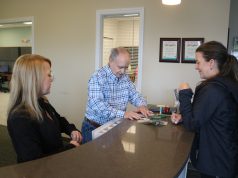Ensuring that living spaces are accessible is essential for promoting inclusivity and independence within our communities. An accessible living environment empowers individuals with varying abilities to live in their homes with confidence and dignity.
Creating a handicap-friendly home involves addressing physical, cognitive, and sensory needs. It entails various considerations, from architectural modifications to interior design elements and integrating assistive technologies.
The aim is to eliminate barriers and create environments that cater to individual preferences and requirements. This overview will explore various straightforward yet impactful steps to transform homes into havens of accessibility and inclusivity.
Assessing Accessibility Needs
The initial step in making a home more handicap-friendly is to assess its existing accessibility status comprehensively. This evaluation entails a detailed examination of various elements within the home, such as entry points, interior layouts, fixtures, and structural features.
By scrutinizing areas like doorways, hallways, bathroom and kitchen layouts, and outdoor pathways, it’s possible to identify specific barriers hindering accessibility. This assessment forms the groundwork for pinpointing areas that require modification or improvement.
Leveraging Smart Technology
Integrating smart home systems tailored for accessibility enhances the overall functionality of a handicap-friendly home. These systems can include:
- automated door openers
- smart thermostats
- home automation hubs
All these fixtures can be controlled remotely. Such technology empowers individuals with disabilities by giving them greater control over various aspects of their living environment, fostering independence and convenience.
Voice-activated assistants, such as smart speakers or virtual assistants, also offer convenience and accessibility within the home. These systems allow residents to control lights, adjust temperatures, or access information using voice commands, eliminating the need for physical interaction with devices. Individuals can even command these voice assistants to load their favorite websites or internet pages, including the Fairgo casino AU page.
Removing Physical Barriers
Ensuring adequate space for wheelchair access is necessary in creating a handicap-friendly home. Widening doorways and hallways enhances mobility and maneuverability. Standard doorways may pose obstacles for wheelchair users, so expanding these passages allows for easier navigation throughout the home, promoting independence for individuals using mobility aids.
Ramps or Lift Installation
Integrating ramps or lifts within the home is a significant step in eliminating barriers to movement. Ramps provide smooth and unobstructed access for wheelchair users, making transitions between different levels effortless.
Similarly, lifts offer an alternative for individuals with difficulty using ramps or stairs. These installations ensure the entire home remains accessible, enabling residents to move between spaces without encountering physical hindrances.
Adjusting Living Spaces
Transforming kitchens and bathrooms to accommodate accessibility needs is essential in creating a handicap-friendly home. Adjustments that make a difference include:
- optimizing counter heights
- ensuring reachable storage
- creating open spaces
These modifications facilitate ease of movement and usage for individuals with varying abilities. They get to perform daily tasks comfortably and efficiently.
Grab bars strategically placed near toilets, showers, or bathtubs offer stability and support, reducing the risk of slips and falls. These modifications enhance safety and confidence, promoting a secure living environment for all occupants.
Flooring and Lighting
Selecting non-slip flooring materials helps create a safe and accessible environment within a handicap-friendly home. These materials, designed to minimize the risk of slips or falls, offer enhanced traction and stability. They are beneficial in moisture-prone areas, such as bathrooms and kitchens.
Adequate lighting helps individuals with visual impairments move around spaces more comfortably and confidently. Strategic placement of lighting fixtures, including task lighting in work areas and motion-activated lights in hallways, enhances visibility and reduces potential hazards. Well-lit environments promote security and independence, providing a more accessible living space.
Addressing Outdoor Accessibility
Creating an inclusive living environment also involves ensuring that outdoor areas are accessible to individuals of all abilities. Here are some considerations and modifications to make outdoor spaces welcoming, safe, and easily traversable.
- Opt for smooth, level surfaces like concrete or asphalt. Avoid gravel or uneven terrain that can be challenging for wheelchairs or mobility aids.
- Aim for a minimum of 5 feet (1.5 meters) of pathway width to accommodate wheelchairs, walkers, and pedestrians comfortably passing each other.
- Design gentle slopes or ramps instead of steps to connect different levels of the outdoor space. Remember, the ideal slope is 1:12, meaning for every 1 inch of rise, there should be 12 inches of horizontal run.
- Eliminate tripping hazards like exposed tree roots, uneven brickwork, or sudden elevation changes.
- Consider automatic door openers for entrances. This eliminates the need for manual effort and ensures everyone can easily enter.
- Illuminate pathways and entrances with strategically placed lights to improve visibility, especially at night. This is crucial for people with visual impairments.
- Include benches or seating areas along pathways for people to take breaks and enjoy the outdoors.
Seeking Professional Guidance and Resources
Working with accessibility experts or qualified architects can be invaluable in creating a handicap-friendly home. These professionals offer:
- Specialized Knowledge: They understand regulations and best practices, ensuring your modifications comply and maximize functionality.
- Tailored Solutions: Accessibility experts can assess your situation and recommend modifications that fit your space and requirements perfectly.
- Creative Problem-Solving: Faced with tricky layouts or unique challenges? Accessibility experts can think outside the box and craft innovative solutions that work for you.
Creating a handicap-friendly home celebrates diversity, promotes independence, and ensures everyone feels at home. The process is ongoing, and every improvement, no matter how small, contributes to a more inclusive living environment. So, if you’re ready to start this transformative journey, take the first step today.








